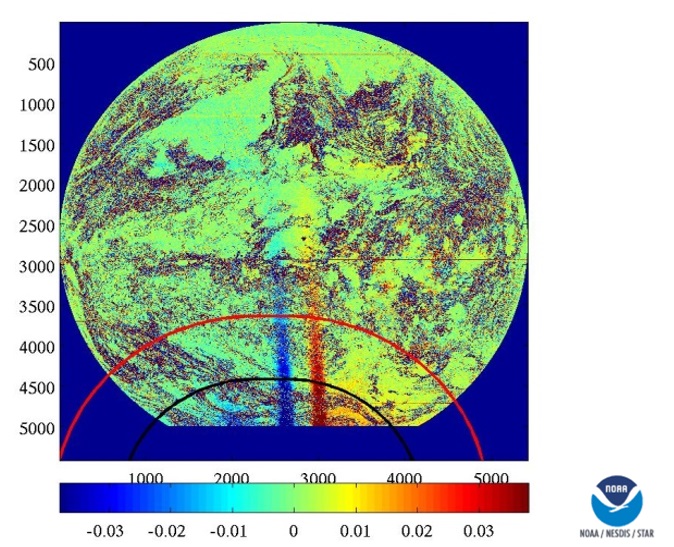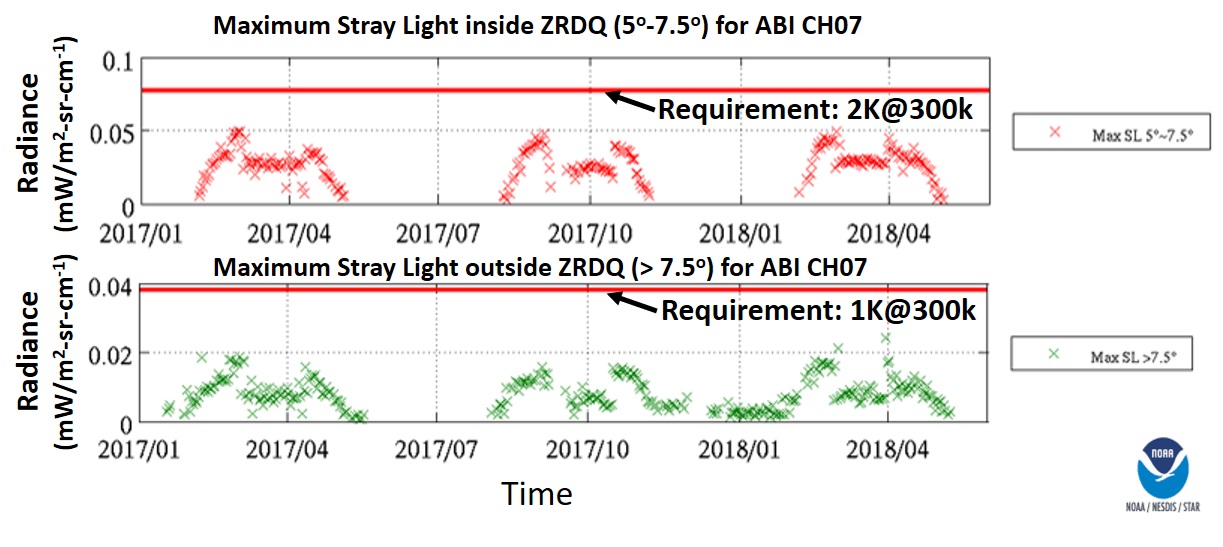GOES-16 ABI IR Channel Stray Light at Night
Approximately 45 minutes before and after GOES-16 satellite local midnight during eclipse seasons, which is approximately 40 days before and after the vernal (March 21) and autumnal (September 21) equinox, stray light may exist for IR channels. ABI is allowed to have stray light within 5° from the Sun for the 3.9μm channel (B07) and 3° for other IR channels. In reality, stray light is often excessive for the 3.9μm channel (B07), small for the 6.2μm channel (B08), and negligible for other channels in this “Restricted Zone”. Outside of the Restricted Zone but within 7.5° from the Sun is the Zone of Reduced Data Quality (ZRDQ), where requirements is relaxed by a factor of two than “Operational Zone”. In reality, stray light is smaller than the required for the 3.9μm channel (B07) and negligible for other channels in ZRDQ. Note that requirement is defined in radiance so stray light may appear excessive in terms of brightness temperature Tb, especially for 3.9μm at low scene radiance (and Tb). For example, let B and B-1 be Planck and inverse Planck function and omit the radiance unit of mW/m2-sr-cm-1 in the following discussion, B(300K) = 0.9168. In ZRDQ, the requirement is 2K at 300K. Since B(302) = 0.9946, the allowed radiance error is 0.9946 - 0.9168 = 0.0778. This means that Tb error must be less than 2K for scenes with Tb of 300K or warmer, but since B(250) = 0.0784 and B-1(0.0784+0.0778) = 262.37K, Tb error of up to 12K is allowed for scenes with Tb of 250K or colder. Users should beware of these stray light characteristics and their potential impacts on certain applications.
The ABI stray light outside and within the ZRDQ have been routinely monitored since January, 2017. ABI B07 stray light is identifiable in the radiance-difference image between consecutive ABI full-disk images (Figure below).

Long-term monitoring of ABI stray light have been performed by processing ABI full-disk imageries one hour before and after GOES-16 satellite midnight throughout the year. Figure below shows the time series of daily maximum stray light of ABI B07 together with the requirement, which confirmed that the ABI stray light magnitudes are within the requirement both inside ZRDQ and in region outside the 7.5o ring from Sun.


